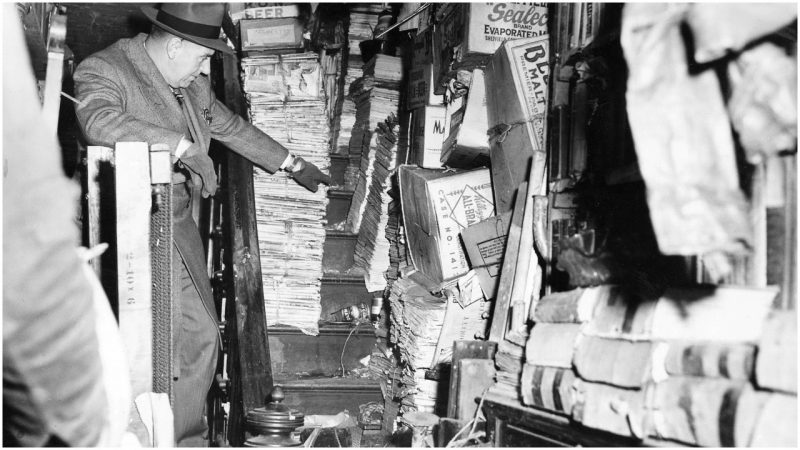Most of us have had that twinge of reluctance over parting with a cherished object. It can be tempting to hang onto the things that possess some sort of sentimental value, though if these things pile up, we need to summon up our inner ruthlessness to keep some order.
However, for some, parting with almost any item proves to be nearly impossible. The phenomenon of hoarding has been around since ancient times, but it is a condition that seems very much in the news today. It is poorly understood, despite the fact that every year more and more studies are published on the topic. In the past, it could be dangerous, with some hoarders tragically found crushed to death by their own belongings.
Some hoarders talk openly about their problem, especially if they find themselves on television. Before the age of reality TV, one of the most famous cases was that of the Collyer brothers. The siblings arguably set the gold standard in hoarding when their dead bodies were found, rotting, trapped amid their towering collection of junk.
Their father, Dr. Herman Livingston, was also known for his eccentricity. His wife, Susie, was allegedly his first cousin. The brothers were born in 1881 and 1885, and both were well educated, attending Columbia University, with Homer attaining a degree in law and Langley in engineering.
The brothers lived an outwardly normal life until 1919, when their parents separated and they made a decision to stay with their mother in the family mansion at 2078 Fifth Avenue in Manhattan. Both their parents had died by 1929, with the brothers inheriting the family fortune and mansion, and that is where they sealed themselves away from the eyes of other people.
Rumors about their strange way of life started spreading in the neighborhood, but it wasn’t until 1933, when Homer lost his eyesight, that things started getting seriously bizarre. His brother Langley quit his job to take care of his brother, devising a diet that was supposed to restore his sight, of 100 oranges per week, black bread, and peanut butter. In order that once his brother could see again he could catch up on the news, Langley started collecting newspapers.
What started off as a simple gesture towards his blind brother soon become an obsession with collecting junk and as time passed by, the junk collection filled all the empty space of the house. The brothers created tunnels through the junk and various booby traps that were supposed to protect them from intruders and burglars.
Interest in the eccentric brothers grew to a fever pitch in the following years, with neighbors describing Langley as “the ghosty man” who wouldn’t leave the mansion before midnight. In 1942, the New York Times published an interview with Langley who claimed that since 1928 he and his brother had lived without gas and electricity, additionally, he said that they used kerosene to cook and heat their home.
It was March 21, 1947, when an anonymous man called the police, claiming that there was a dead body in the mansion. The police soon arrived at 2078 Fifth Avenue and broke down the door, but to their surprise, they discovered there was actually no way inside the house. A massive pile of junk blocked their way and had to be slowly removed before they could even glimpse the interior.

It took them hours before the rotting body of Homer was found, but there was no trace of Langley, and soon rumors swirled among the thousands of spectators standing in front of the mansion that Langley left his brother to starve to death and escaped. It took around three weeks before the mystery of the missing brother was solved. It turned out that his body was just 10 feet away from the spot where the body of his older brother was found. It appeared that Langley was killed by one of the many booby traps he personally set up, and police concluded that Homer died of starvation several days later.
About 120 tons of junk was removed from their house, including 25,000 books, pickled human organs, 14 pianos, bowling balls, and the chassis of an old Model T. The eccentric brothers were buried with their parents at Cypress Hills Cemetery in Brooklyn. Their house was torn down and the site was turned into a small park, named in their honor.
